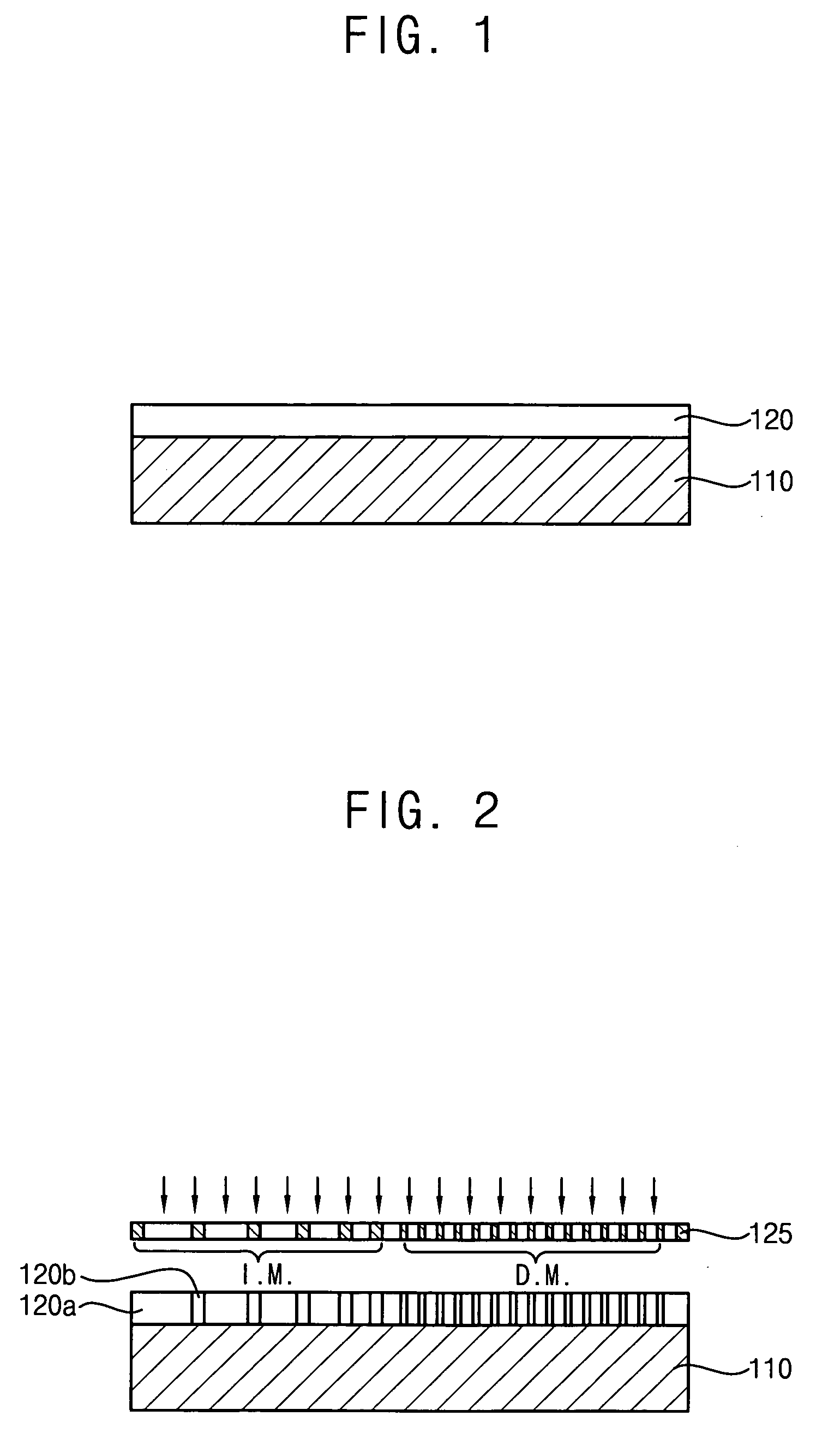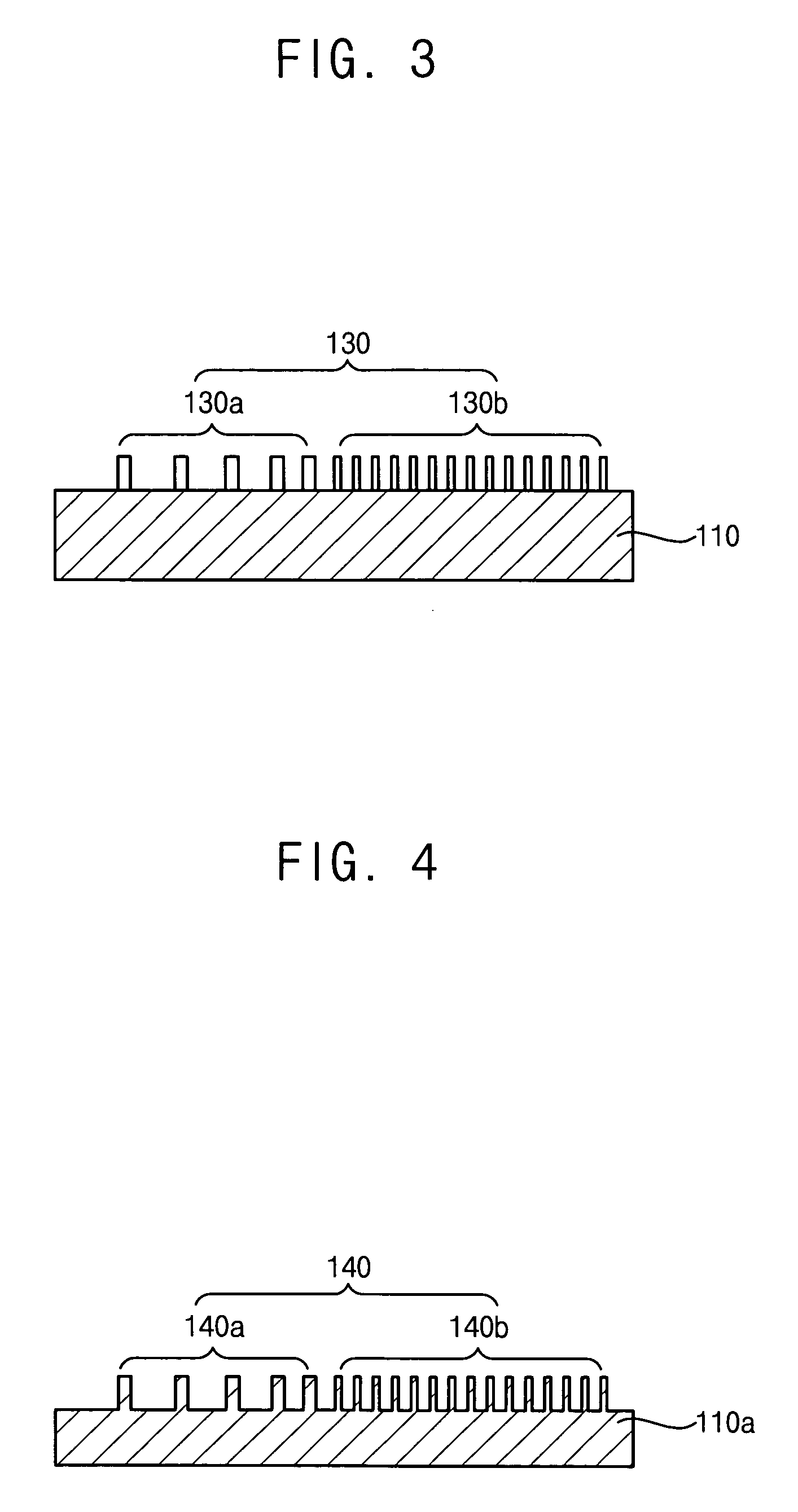Photoresist composition and method of forming a pattern using the same
- Summary
- Abstract
- Description
- Claims
- Application Information
AI Technical Summary
Benefits of technology
Problems solved by technology
Method used
Image
Examples
example
[0074] About 42 parts by weight of methyl acrylate including methyl adamantane, about 28 parts by weight of methacrylate including ethyl cyclohexane, about 25 parts by weight of monophenyl sulfonate, about 10 parts by weight of a quencher and about 895 parts by weight of a solvent were mixed with each other. The impurities were filtered off from the mixture by a 0.2 μm membrane filter, to thereby prepare a photoresist composition in accordance with an exemplary embodiment of the present invention that is then photo-chemically reacted with an ArF excimer laser. In this Example of the photoresist composition, the methyl acrylate was used as the first blocking group and the methacrylate was used as the second blocking group. Further, the monophenyl sulfonate was used as the PAG.
PUM
 Login to View More
Login to View More Abstract
Description
Claims
Application Information
 Login to View More
Login to View More - R&D
- Intellectual Property
- Life Sciences
- Materials
- Tech Scout
- Unparalleled Data Quality
- Higher Quality Content
- 60% Fewer Hallucinations
Browse by: Latest US Patents, China's latest patents, Technical Efficacy Thesaurus, Application Domain, Technology Topic, Popular Technical Reports.
© 2025 PatSnap. All rights reserved.Legal|Privacy policy|Modern Slavery Act Transparency Statement|Sitemap|About US| Contact US: help@patsnap.com



